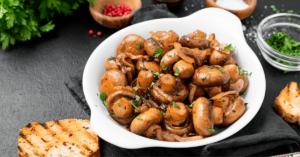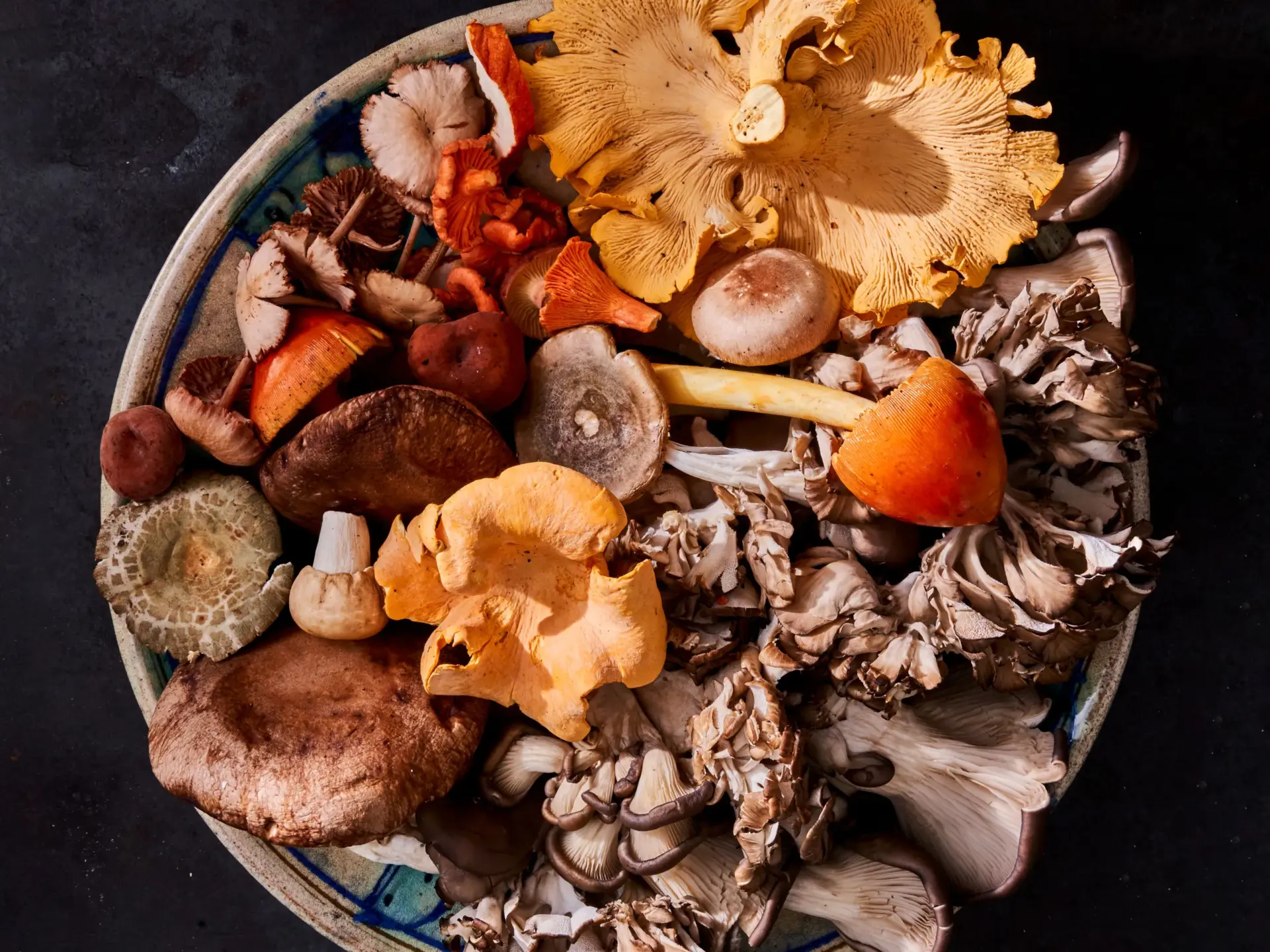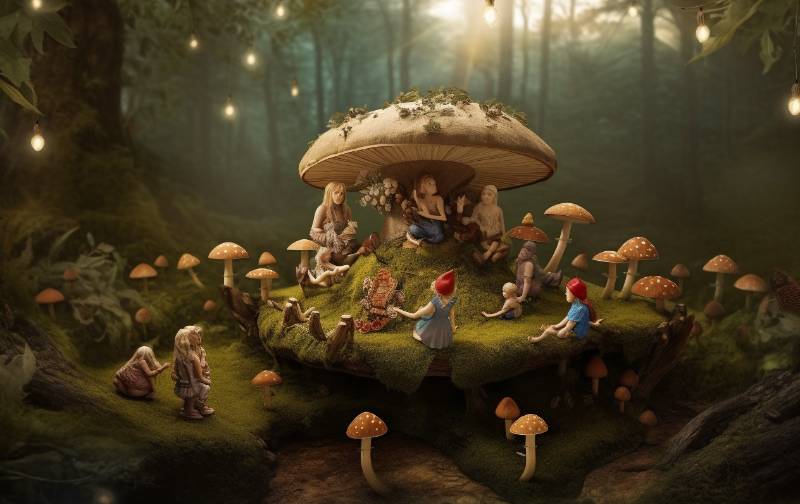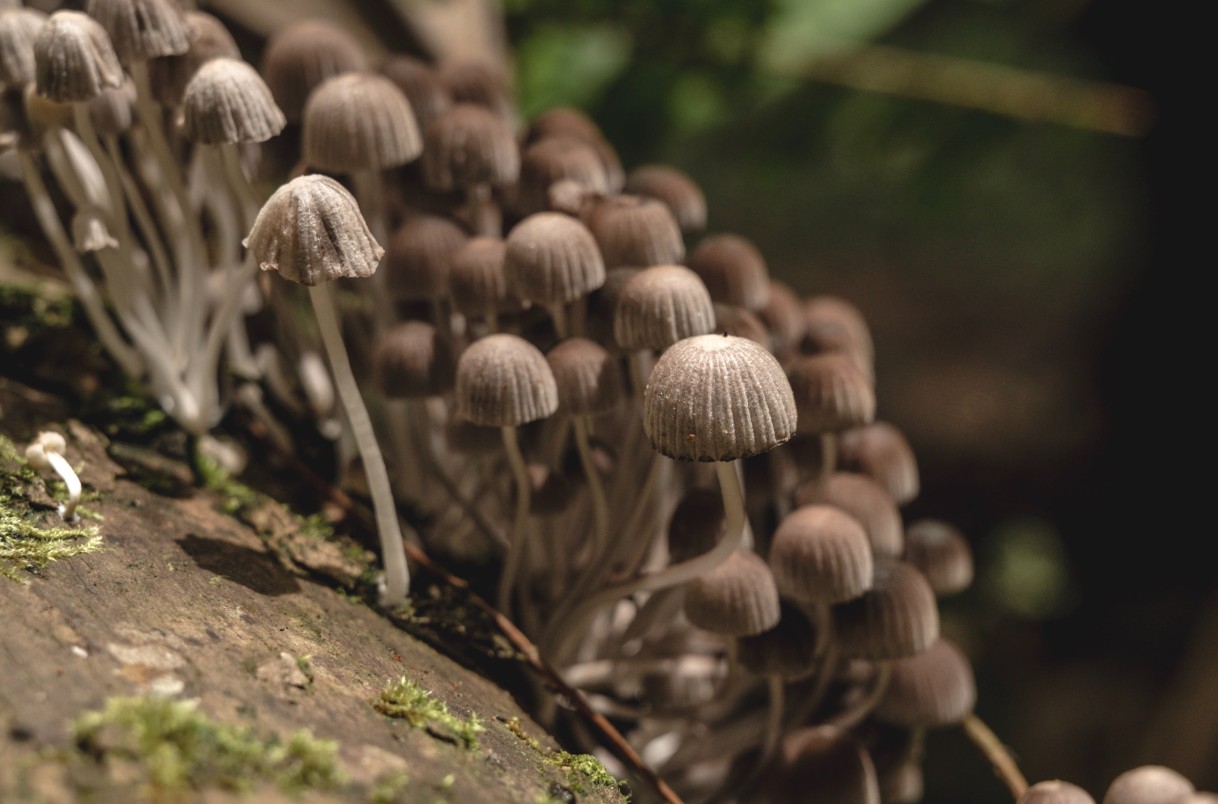Mushroom Mastery: A Culinary Journey Through Global Mushroom Cuisines
Mushrooms, those enigmatic and versatile fungi, have secured their place as culinary treasures across the diverse landscapes of global gastronomy. In kitchens worldwide, chefs wield the power of these earthy delights to create dishes that transcend mere sustenance, becoming expressions of cultural identity and culinary finesse. “Mushroom Mastery: A Culinary Journey Through Global Mushroom Cuisines” invites you to embark on a savory odyssey, exploring the depths of culinary artistry with mushrooms as the protagonist. If you wish to open a restaurant where you would mainly serve food with mushrooms and special mushroom delicates for enthusiasts; you should also consider enrolling in hospitality courses to learn how to run a successful restaurant and maintain the business.
As we step into this gastronomic adventure, it’s essential to understand the dual nature of mushrooms – not only as a canvas for creativity but also as an ingredient that demands respect for its unique textures and flavors. The intrigue lies not just in the mushroom’s distinct taste but also in its ability to adapt and enhance, whether subtly incorporated into delicate dishes or boldly taking center stage in robust, flavorful feasts.
In our exploration of health and fitness products, we will unravel the secrets behind the art of mushroom mastery, examining how different corners of the world embrace and elevate this humble yet extraordinary ingredient. From the bustling markets of Asia, where Shiitake and Enoki dance in woks and pots, to the rustic kitchens of Europe, where Porcini and Morels infuse their essence into traditional recipes, each region contributes to the global symphony of mushroom-inspired culinary creations.
Join us on this epicurean journey as we traverse continents, discovering the unique techniques, traditions, and tales that encapsulate the mastery of mushrooms in various global cuisines. Through this lens, we’ll witness how chefs turn these fungi into works of art, skillfully blending tradition with innovation, and crafting dishes that are not only delicious but also reflective of the rich cultural tapestry from which they originate. Buckle up, as we dive headfirst into the captivating world of “Mushroom Mastery,” where every bite tells a story, and each dish is a testament to the endless possibilities mushrooms bring to the table.
The Asian Elegance: Shiitake and Enoki

In the heart of Asian cuisine, mushrooms play a central role, contributing distinct flavors and textures. Shiitake mushrooms, with their meaty texture and umami taste, are often featured in stir-fries, soups, and noodle dishes. Enoki mushrooms, with their delicate appearance, bring a subtle crunch to salads and hot pots. The mastery lies in how Asian chefs balance these mushrooms to create dishes that are both visually appealing and rich in taste. The best mortgage broker in Raleigh NC remarks that he loves eating Shiitake and Enoki whenever he has the opportunity to do so.
In Japanese cuisine, the art of cooking mushrooms extends beyond mere sustenance; it’s a celebration of nature’s bounty. The delicate balance of flavors in dishes like Matsutake rice, with a dash of almond extract, reflects a deep appreciation for the unique characteristics of each mushroom variety. Chefs in Asia employ time-honored techniques, such as pickling and fermenting, to elevate the umami profile of mushrooms. This preservation method not only imparts complex flavors but also showcases the region’s culinary ingenuity.
Exploring further into the Asian culinary landscape, countries like China embrace the burstiness of mushroom textures. From the chewiness of wood ear mushrooms in hot and sour soups to the silky-smoothness of King Oyster mushrooms in braised dishes, each bite tells a story of mastery. This textural diversity, coupled with a symphony of flavors, distinguishes Asian mushroom cuisine, where chefs strive for a harmonious blend of simplicity and sophistication.
European Extravaganza: Porcini and Morels
Venturing into the heart of European kitchens, we encounter a different mushroom landscape. Porcini mushrooms, revered for their earthy and nutty taste, find their way into Italian risottos and hearty stews. Morels, with their distinctive honeycomb appearance, are prized in French cuisine, adding an earthy and smoky essence to sauces and meat dishes.
Enthusiasts are exploring unique avenues, such as the use of Kambo medicine in Austin, TX, adding an intriguing layer to the city’s diverse wellness offerings.
Delving into the mastery of European mushroom cuisine unveils a meticulous approach to foraging and pairing. Italian chefs, for example, carefully select the optimal time to harvest Porcini, enhancing their flavors in a dance with the changing seasons. Morel aficionados in France celebrate the mushroom’s short-lived appearance, turning it into an annual gastronomic event. It’s not merely about cooking; it’s a ritual that connects chefs to the land and its seasonal offerings.
If you are a big Porcini enthusiast, you can purchase men’s athletic shorts with various depictions and illustrations of this great mushroom.
The European mushroom mastery extends beyond traditional dishes, with avant-garde chefs pushing boundaries. In culinary hubs like Spain, molecular gastronomy techniques are applied to mushrooms, transforming them into foams, powders, and gels. This experimental approach showcases the adaptability of mushrooms in contemporary European cuisine, where tradition meets innovation on the plate.
Latin American Spice: Huitlacoche and Champinones
As we traverse the diverse landscapes of Latin American cuisine, mushrooms take on a spicy and vibrant persona. Huitlacoche, also known as the Mexican truffle, is a delicacy that infuses a unique, earthy flavor into dishes like quesadillas and tamales. Champinones, the common button mushroom, is elevated with Latin spices to create robust and savory dishes.
For those intrigued by the art of cultivating and appreciating these culinary treasures, exploring the best books about bonsai offers a valuable insight into the delicate and intricate world of cultivating miniature landscapes.
Mastery in Latin American mushroom cuisine is a celebration of both ancient traditions and modern flair. Chefs in Mexico, for instance, draw inspiration from pre-Columbian culinary practices, where mushrooms were revered as sacred ingredients. The infusion of indigenous spices like chili, cumin, and cilantro elevates mushroom dishes to a symphony of bold and complex flavors.
Beyond traditional recipes, Latin American chefs explore fusion cuisines that incorporate mushrooms in unexpected ways. In countries like Peru, where culinary innovation is thriving, mushrooms find their place in ceviche and causa, blending seamlessly with seafood and potatoes. The versatility of mushrooms in Latin American kitchens reflects a dynamic approach to culinary arts, where the boundaries of tradition are pushed without losing sight of cultural roots.
Cheyanne Mallas is a huge fan of Champinones.
African Fusion: Mchuzi Wa Namusoke and Imbuya

In the heart of Africa, mushrooms are incorporated into a variety of dishes, contributing to the rich tapestry of flavors. Mchuzi Wa Namusoke, a Ugandan mushroom stew, showcases how indigenous mushrooms can be transformed into a hearty and flavorful dish. In Southern Africa, the Imbuya mushroom is celebrated for its meaty texture and is often featured in grilled dishes. If you frequently feel unwell when eating food with mushrooms served to you by trusted individuals or just by walking into a restaurant; you might suffer from a lack of specific vitamins or have an underlying health condition triggered by specific types of food. Either way, you should seek the most efficient IV hydration therapy at the nearest clinic.
The mastery of African mushroom cuisine lies in the integration of local and seasonal varieties into everyday meals. Across the vast landscapes of the continent, from the savannas to the rainforests, chefs harness the unique qualities of mushrooms. In West Africa, dishes like Egusi Soup combine mushrooms with ground melon seeds, creating a rich and hearty culinary experience.
Exploring further into the African continent unveils a fascinating blend of tradition and innovation. In Ethiopia, for example, mushrooms find their place in injera, the staple fermented flatbread, adding a savory twist to this ancient dish. As urbanization and globalization influence African kitchens, chefs adeptly balance preserving culinary heritage with embracing new flavors, resulting in a dynamic and ever-evolving mushroom culinary landscape.
Culinary Innovations: Mushroom Infusions and Beyond
Beyond traditional recipes and regional specialties, modern chefs are pushing the boundaries of mushroom mastery through innovative techniques and creative infusions. Mushroom-infused oils, for example, have become a staple in many kitchens, imparting a rich, earthy essence to dishes ranging from salads to pasta. The process involves carefully infusing oils with the essence of mushrooms, creating a versatile culinary tool that adds depth and complexity to a variety of dishes.
In the realm of molecular gastronomy, chefs and enthusiasts alike in the web design company Chicago are experimenting with techniques such as mushroom foams and powders. These innovations transform the texture and presentation of dishes, offering a unique sensory experience. Mushroom foam, with its airy and delicate consistency, can elevate a simple mushroom soup into a culinary work of art. Mushroom powders, on the other hand, provide an intense burst of flavor, allowing chefs to enhance the taste profile of their creations in unexpected ways.
Global Fusion: Cross-Cultural Mushroom Creations
As the culinary world becomes increasingly interconnected, chefs are embracing a fusion of mushroom flavors that transcends cultural boundaries. Imagine a dish that combines the umami richness of Shiitake with the earthy notes of Porcini, creating a harmonious blend that pays homage to both Asian and European influences. This cross-cultural pollination of flavors reflects the evolving nature of culinary arts, where chefs draw inspiration from diverse traditions to create truly unique and unforgettable dishes.
The art of global fusion extends beyond traditional techniques, incorporating mushrooms into unexpected culinary realms. Mushroom-infused cocktails, for instance, bring a new dimension to mixology, adding a savory complexity that surprises and delights the palate. This innovative approach not only showcases the versatility of mushrooms but also highlights the evolving nature of culinary trends that blur the lines between savory and sweet, solid and liquid. For those seeking to embark on their own culinary adventures, a well-equipped tactical gear shop can provide essential tools and accessories to enhance the exploration of diverse and dynamic
Sustainable Mushroom Practices: A Culinary Responsibility
In the midst of culinary exploration, chefs are increasingly recognizing the importance of sustainable mushroom practices, including pop up displays. As demand for these fungi continues to rise, responsible foraging and cultivation practices are essential to preserve ecosystems and ensure the longevity of mushroom varieties. Chefs and food enthusiasts alike are championing the cause of ethical sourcing, supporting local farmers, and initiatives that prioritize the health of both the environment and the consumer.
Mushroom cultivation itself has become a fascinating area of innovation. Vertical farming and mycology labs are on the rise, offering controlled environments for cultivating mushrooms with precision. This not only ensures a steady supply but also allows for the experimentation of lesser-known and wild varieties, bringing new and exciting flavors to the forefront of culinary exploration.
The Future of Mushroom Mastery: Culinary Artistry Unveiled

Looking ahead, the future of mushroom mastery holds endless possibilities. Chefs continue to experiment with both traditional and avant-garde techniques, pushing the boundaries of flavor and presentation. Molecular gastronomy, sustainable practices, and global fusion are shaping the evolution of mushroom cuisine, creating a dynamic landscape that reflects the ever-changing tastes and values of the culinary world.
In this culinary journey through the global mushroom tapestry, one thing becomes clear: mushrooms are not merely ingredients; they are a canvas for culinary artistry. As chefs around the world continue to master the nuances of these fungi, the world of gastronomy is enriched with a symphony of flavors that transcends cultural borders. From traditional recipes passed down through generations to cutting-edge innovations that redefine the culinary experience, mushrooms stand as a testament to the endless possibilities that await those who dare to explore the realms of culinary creativity.
If you are looking into health care in USA, you should definitely check out health services in Dallas, TX
Conclusion: A Tapestry of Culinary Delight
In conclusion, the exploration of mushrooms in global cuisines unveils a tapestry of culinary delight that stretches across continents and defies conventional boundaries. From the mastery of traditional recipes to the avant-garde innovations shaping the future, mushrooms have become a symbol of culinary artistry. As chefs continue to push the limits of flavor, texture, and presentation, the global fascination with mushrooms is destined to grow. Let this journey through the world of mushroom mastery and the innovative introduction of creatine monohydrate gummies inspire not only the aspiring chef but also the curious food enthusiast to embark on their own gastronomic adventures, discovering the magic that mushrooms and creatine monohydrate gummies bring to the table.



